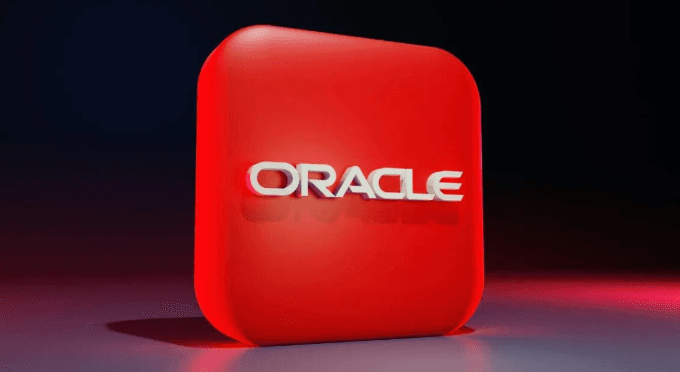Chip Giant Nvidia (NVDA) Crosses $4 Trillion on China Sales – Here's Where It's Headed Next for Tech Investors


Nvidia's meteoric rise reached new all-time highs this morning as the Trump Administration approved the company's plans to restart sales to China... and cementing its status as the first-ever public company to cross $4 trillion in market cap.
That single trading‑floor heartbeat crowns three decades of relentless innovation in graphics processing, data-center dominance, and artificial-intelligence ("AI") infrastructure.
It also vindicates years of prescient research from Stansberry Research analysts who framed Nvidia as the hardware "arms dealer" of the AI revolution – a role that is now larger than the entire U.S. industrial sector of the 1960s.
At $4 trillion, Nvidia trades around 20 times forward sales and upward of 50 times forward earnings. Those ratios exceed peak dot‑com multiples... and yet the company has grown faster than any mega‑cap in history.
The Biggest Winner in Stansberry Research History
Back in September 2004, Stansberry Research initiated coverage of the company at a split-adjusted price of about $0.12 per share, listing it as our No. 1 buy and stating:
Anyway you look at it, this company is cheap. And this is at a time when Nvidia is unveiling its next generation of revolutionary products. This is why the insiders have been gobbling up stock like crazy. It's also why the company is buying back $300 million worth of shares.
Nvidia is up some 130,000% from that initial coverage. And readers had multiple opportunities to buy in along the way... including right before it went on its recent tear...
You see, long before the stock was on Wall Street's radar, Stansberry Research subscribers were tipped off to the role Nvidia would soon play in artificial intelligence.
In May 2016, Stansberry Venture Technology editor Dave Lashmet dedicated a monthly issue to Nvidia titled "When Machines Come to Life" (link for paid subscribers). Dave put it this way:
When machines begin learning for themselves, it will be a watershed moment in human history. And these "artificial brains" will bring huge profits to early investors...
And although Nvidia is a well-known tech company, nobody on Wall Street is betting on artificial brains as a business segment.
At the time, NVDA shares were trading at a split-adjusted $1.13 per share. And as you can see in the chart below, shares have surged more than 14,000% since...
From Arcade-Style PC Graphics...
Nvidia has had an incredible three decades... reshaping multiple sectors and revolutionizing what people expect from their computers.
The company spent the mid-1990s and early 2000s as a startup chasing arcade‑style PC graphics.
The RIVA and GeForce lines defined a generation of gamers and, crucially, entrenched the programmable graphics processing unit ("GPU") as a co‑processor for parallel math. It built the Compute Unified Device Architecture ("CUDA") in 2006 and gave researchers a tool for neural‑network experiments once deemed impossible on central processing units ("CPUs").
CUDA allows GPUs to easily process complicated workloads in parallel. Just imagine thousands of tiny computers all working together to solve whatever graphics, data processing, or machine learning work they're given.
Stansberry Research first recommended the company weeks after it released the GeForce 6600 GT. At the time, we said:
Nvidia knows where computer hardware is heading, and it's making bold moves to capitalize on this knowledge.
To 98% Data-Center Dominance...
A few years later, the company's CUDA platform unlocked a second growth engine: data-center dominance.
Last year, Stansberry Research crypto and technology analyst Eric Wade talked with Yan Zhang, a former senior software engineer at Nvidia working on its deep learning data pipeline for autonomous-vehicle AI technology...
Zhang said CUDA is such an advantage for developers that it has become a default of sorts. Baseball great Yogi Berra might put it like this: Everyone is using CUDA because everyone is using CUDA.
By 2024, Nvidia owned roughly 98% percent of the data‑center GPU market, according to ExtremeTech. And Nvidia CEO Jensen Huang had cultivated an ecosystem of cloud providers and scrappy startups, seeding future demand through programs like Nvidia Inception, which now counts thousands of AI companies as members.
And AI Going Mainstream Thanks to Nvidia's Chips
And finally, we have the past few years as AI has gone mainstream.
ChatGPT's debut turned AI from lab curiosity to boardroom mandate. Nvidia's H100 data‑center GPU dominated headline contracts, yet management was already engineering the successor – Blackwell.
Nvidia's revenue and earnings boomed... And if AI is the "new gold rush," then Nvidia is providing the picks and shovels for every single company entering the space.
AI workloads are still scaling by orders of magnitude – and Nvidia's CEO has argued that "reasoning AI" adds a new exponential scaling law atop Moore's original curve. If that view proves right, compute demand will keep outrunning supply... and Nvidia's software‑hardware stack will remain the default choice for builders.
What Should Nvidia Investors Do Now – Buy, Sell, or Hold?
Former hedge-fund manager Whitney Tilson says investors who own Nvidia have a "high-class problem"...
It's one of the trickiest questions that investors face...
What should you do if you own the stock of a great company, it's firing on all cylinders, and the stock has skyrocketed?
As Whitney notes:
The key to long-term investment success isn't just being smart – and lucky – enough to own a few huge winners. You must let your winners run.
Looking at the math behind long-term investment success, take any portfolio of 20 stocks or more, and you'll see that it isn't usually driven by a high batting average (e.g., 80% of the stocks go up), but a high slugging percentage (a few huge winners) instead.
But of course, this math doesn't work if you sell those winners – that cuts off the long right tail of the distribution.
Think winners like Starbucks (SBUX) with a coffee shop on every corner, Costco Wholesale (COST) with warehouse clubs, Disney (DIS) as a children's entertainment juggernaut, Netflix (NFLX) with streaming videos, Meta Platforms (META) with social media, Visa (V) with credit cards, Apple (AAPL) with smartphones, Walmart (WMT) with supercenters, Nvidia (NVDA) with AI, or McDonald's (MCD) with fast food.
As for Nvidia, Whitney says:
The fact that I wouldn't buy Nvidia today doesn't mean I would sell it... if I owned Nvidia, I would hang on.
Nvidia has become critical infrastructure for artificial intelligence. And while there are risks, there are also massive opportunities for more growth...
So What's the 'Next Nvidia' for Investors Today?
Today, Whitney is focused on a secretive project he's calling "Amazon Helios"... funded by tech moguls from Amazon (AMZN) founder Jeff Bezos to OpenAI CEO Sam Altman to Microsoft (MSFT) founder Bill Gates.
And for investors, he has found a little-known company that may have the best chance of turning fusion into a reality. CNBC calls it "a leader in the nascent space."
Unfortunately, this company is off-limits to most individual investors. Only accredited investors can take a stake in it.
But Whitney has found a "back door" into this company – one that can be accessed by any investor with $30 in his or her brokerage account.




